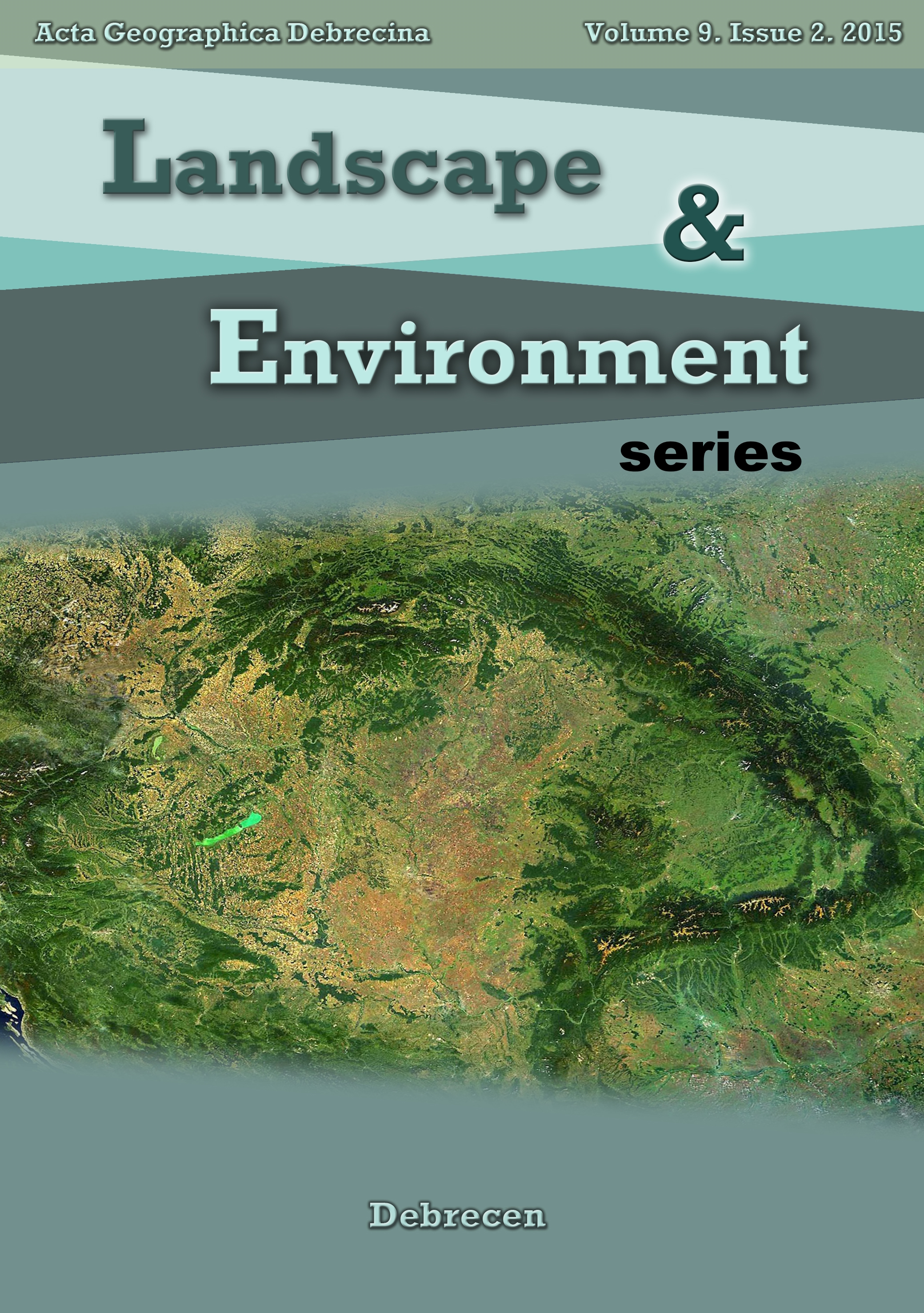Vol. 9 No. 2 (2015)
Kaszala R. - Kevei Bárány I. Heavy metal concentracions in the soils and vegetation of the Béke-cave watershed (Aggtelek-karst, Hungary)
Mustak, S. – Baghmar, N. K. – Singh, S. K. Prediction of industrial land use using linear regression and mola techniques: A Case Study of Siltara Industrial belt
##issue.tableOfContents##
Articles
-
Heavy metal concentracions in the soils and vegetation of the Béke-cave watershed (Aggtelek-karst, Hungary)
51-58Views:314Our research took place on karstic area in Aggtelek National Park in Hungary. The heavy metal content of soils with three different texture and in the plants of the natural vegetation (oak- , hornbeam-, corn leaves, greenery) were studied. Ratio of total (acid soluble) metal contents and bioavailable metal contents of the soils were calculated. Based on these results we determined the mobility of the metals in different soils. Used the metal contents of the soils and the vegetation we set up a sequence of the mobility of the metals between the soil and the most frequent plant species.
pdf72 -
Prediction of industrial land use using linear regression and mola techniques: A Case Study of Siltara Industrial belt
59-70Views:398The Siltara Industrial belt is an important industrial pocket of Chattisgarh state located in the northern part of the Raipur city, which is rapidly growing. In this process spatial, cultural, political and administrative factors are controlling its rate, direction and pattern. The Simple Linear Regression (SLR) and Multi-Objective Land Allocation (MOLA) techniques, which are embedded in SPSS and Idrisi Kilimanjaro software respectively, and have been used for the estimation of future scenario of the industrial growth. In this model, a suitable platform has been prepared in which future industrialization has been estimated by integrating physical, social, cultural factors and land acquisition policy. In this article, results have revealed that industrialization has occurred very fast during last one decade. The industrial land was 6.15 km2 in 2001 and 18.725 km2 in 2011 and estimated as 31.30 km2 in 2021 and 43.87 km2 in 2031 using SLR. The rapid industrial growth is very critical issues for agrarian society and fresh environment. This model very accurately estimating (overall accuracy=95.39%, Kno=97.24%, agreement=98.63 %) the future growth of industrial land. This work will be useful to the planners and policy makers of private and government sectors to regulate the sustainable planning practices and smart decision-making.
PDF104
